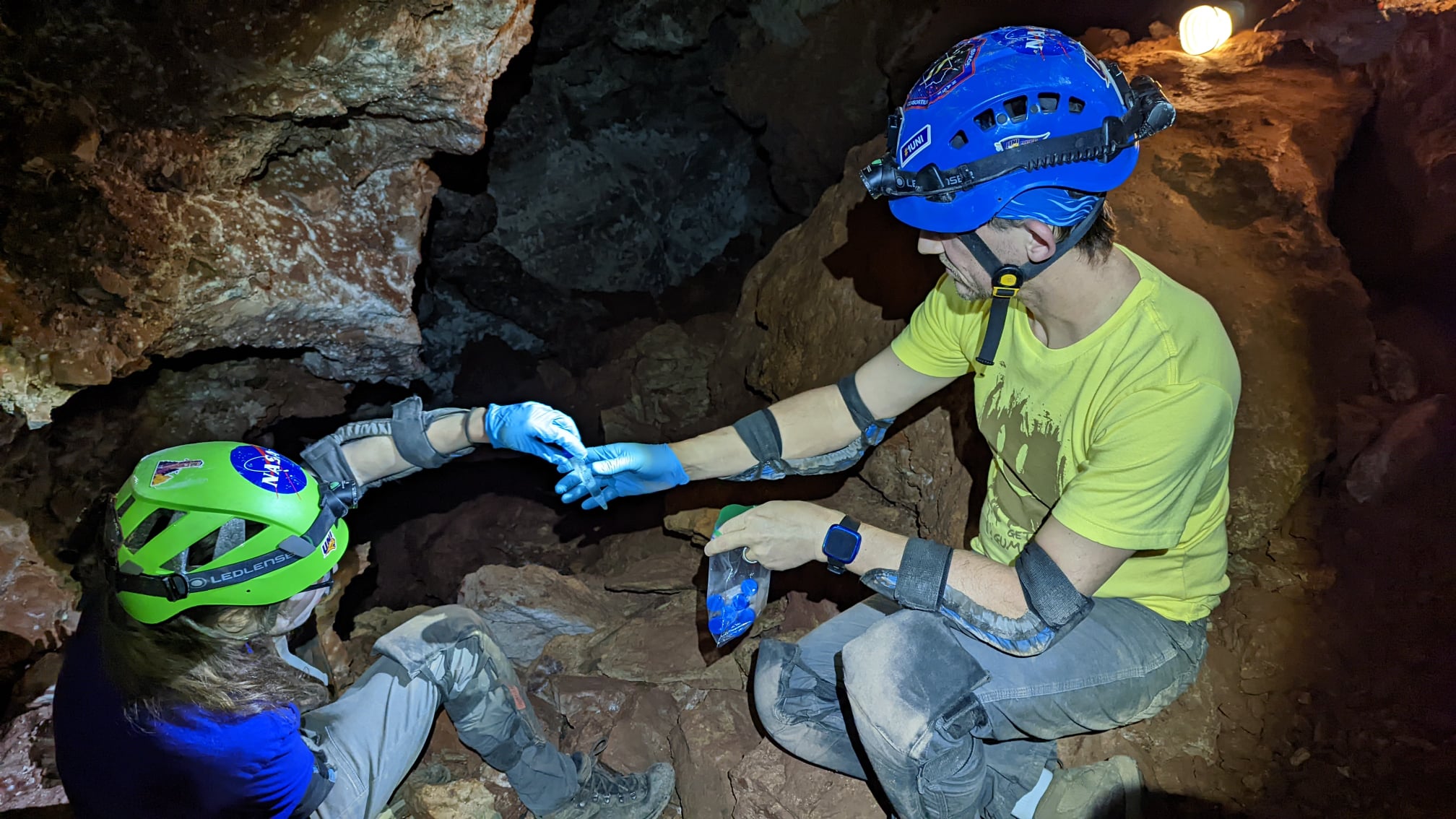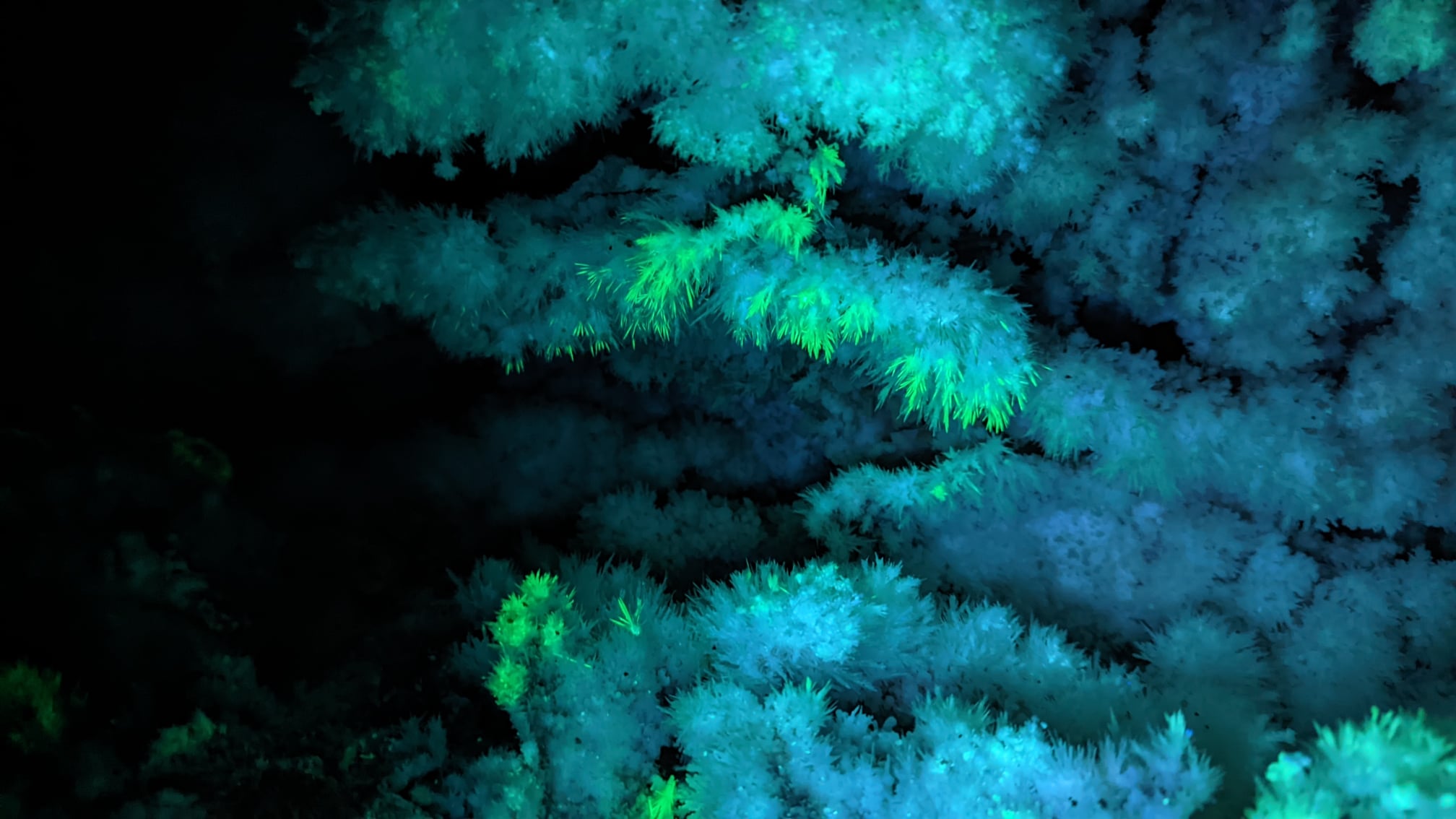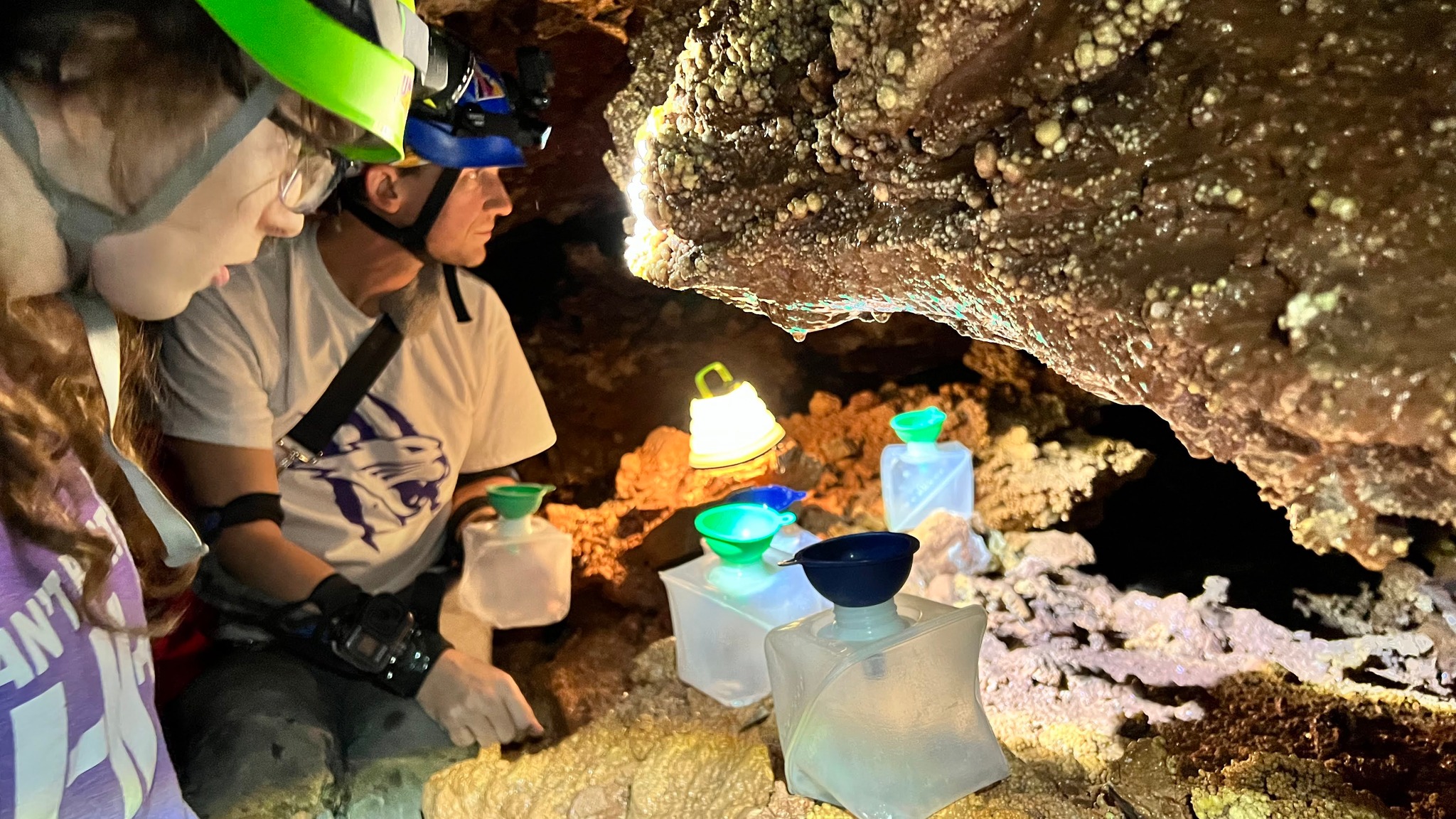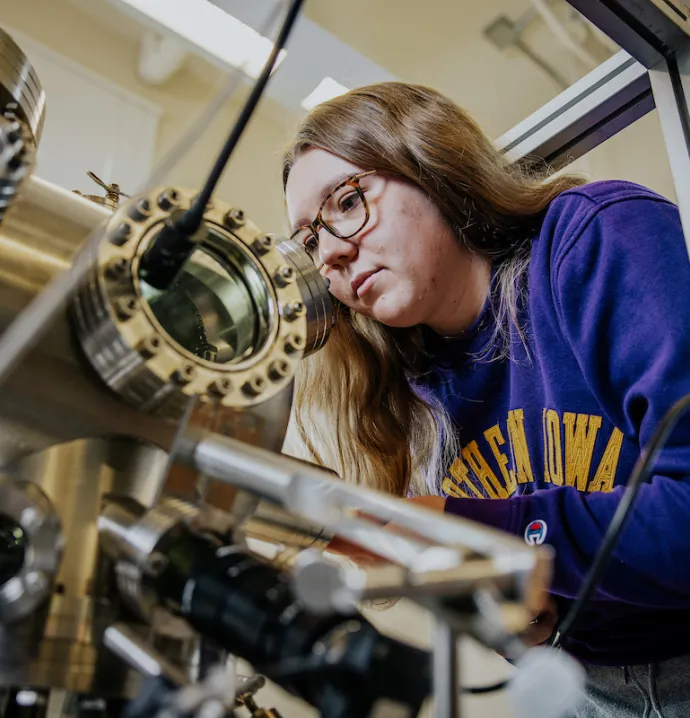The discovery of a lifetime
The discovery of a lifetime
Led by nothing more than the soft glow of their lanterns, a crew of students from the University of Northern Iowa trek into the winding depths of Wind Cave National Park in South Dakota.
Working their way through miles of passageways several hundred feet underground, the air is thick, musty and completely still. Inside the caverns, the dense walls stifle any sound, and seem to absorb the light, leading to an eerie, silent darkness throughout. It feels like exploring a different planet — one that’s completely devoid of any signs of life.
But in this space, the students make a surprising discovery. Here, below the surface, a thriving ecosystem of microbial life exists, somehow managing to survive in the desolation of the cave. Exactly how the microorganisms got there, and how they survive, is what the group hopes to find out.
The trip to Wind Cave National Park last spring is part of an ongoing research project at UNI, led by Josh Sebree, associate professor in the Department of Chemistry and Biochemistry.
For the last several years, Sebree has brought students from his classes to the cave to study and sample the cave water and minerals in search of microbial life. This year, Sebree brought a group of 11 students from his department to the caves. There, they used UV light and spectrometers to study the fluorescence of the cave water and minerals, with the goal of determining what trace metals and organics are present.
“The cave has a really unique story to tell, and this work is redefining our view of extreme life,” Sebree said. “For a long time, scientists thought they knew a limit to how small a cell could be to have all of the things it needs to be alive. One of the first researchers to go in the cave took some samples, and found that the size is much, much smaller than initially thought. The work that’s been done already has only scratched the surface, and now, we need to piece together the rest of the puzzle. We want to learn more about these microorganisms, their ecosystem, and how they live down there.”
Currently, the student researchers are analyzing samples collected from the cave, and initial results confirm rich organic content in both the water and minerals. Another set of samples will be sent to NASA’s Jet Propulsion Lab for further evaluation as part of a unique partnership between researchers at UNI and NASA.
“This is a huge deal for the students who got to participate in this trip and this research,” Sebree said. “It really is one of the culminating experiences in their undergrad career. At any other university, these types of experiences are reserved for grad and post-grad students. Undergrad students are not generally afforded this type of opportunity, so we have a lot of pride being able to bring these experiences to students. They get the chance to do something nobody else in the world has done, and really contribute to the field of science.”
Kailey Casper, a biochemistry student who participated in the research trip, says having the chance to explore uncharted territory was a life-changing experience for her.
“It was amazing,” she said. “We explored parts of the cave where almost nobody had ever been before. At one point, I was the fourth human being to ever see and step foot in one particular area of the cave, and also the first person to collect water samples from that exact spot. It was just a surreal experience.”
Casper and her fellow students spent months planning and preparing for the trip, but couldn’t have imagined what it would really be like.
“Being in the cave for the first time was awe-inspiring,” she said. “Until then, I’d only seen pictures or heard about it, so to finally step foot in the cave, it got me a little emotional. It was physically exhausting at some points, because we had to walk about a million steps, and there was one point I got caught on a rock and ruined a pair of jeans, but it was so worth it. I’d ruin a hundred pairs of jeans to do that again.”
In addition to the 11 chemistry and biochemistry students, two UNI digital media students joined the team on the trip, with aspirations of creating a series of documentary-style videos in order to share the experience and research with a wider audience.
“This is just another layer of the project that showcases UNI’s talent,” Sebree said. “The Department of Communication and Media has an amazing talent pool, and this not only gives them a chance to have something really cool on their CV, but it also helps tell the story of the cave in a unique way.”
Megan Studer, one of the digital media majors, says this was a once-in-a-lifetime trip for her.
“The experience was hands down one of the most amazing things I’ve encountered to this date,” she said. “It was definitely a challenge and something I had to step up for. I had to have faith in myself and go in with a plan and the utmost confidence. I definitely learned a lot about my own filmmaking skills, and about what I plan to do for future documentaries and projects.”
But the challenge paid off for Studer, who says the experience empowered her to believe in herself and her filmmaking skills.
“For me personally, the best part was getting to visit parts of the cave almost nobody had ever been before, and to be the first person in the world to have video documentation of it,” she said. “That is probably the coolest thing I can say about myself, and I think that moment in the caves is what hit me the hardest. It really opened my eyes to the fact that this is exactly what I want to do with my life. I love storytelling, and being able to showcase unique things to those around me. I am so happy and blessed to have been granted an opportunity like this, which allowed me to see things differently, and for that, I will be forever grateful.”
Even though the trip is over, the work continues for Sebree and the students involved. “There’s so much work left to be done before we can fully understand everything down there,” he said.
Luckily, the research has received an additional four years of funding from NASA, through the Iowa Space Grant Consortium, to continue their research. The project has also received funding from the UNI Foundation and the UNI College of Humanities, Arts and Sciences. Sebree hopes to get another team of students out to the caves next year to do a more detailed scientific survey. He’s assembled a team of experts from UNI, including professors in the Department of Biology and the Department of Earth and Environmental Sciences, who will further investigate the caves from top to bottom.
“I’m really grateful for the support and funding we’ve received, and I’m looking forward to digging deeper,” he said. “We’ve got a great group of experts and students here at the university, and I’m excited to push the boundaries of what we know about life and to figure out the rest of the cave’s story.”
This story originally appeared in the Fall 2020 edition of Communique, the College of Humanities, Arts and Science’s alumni magazine.







